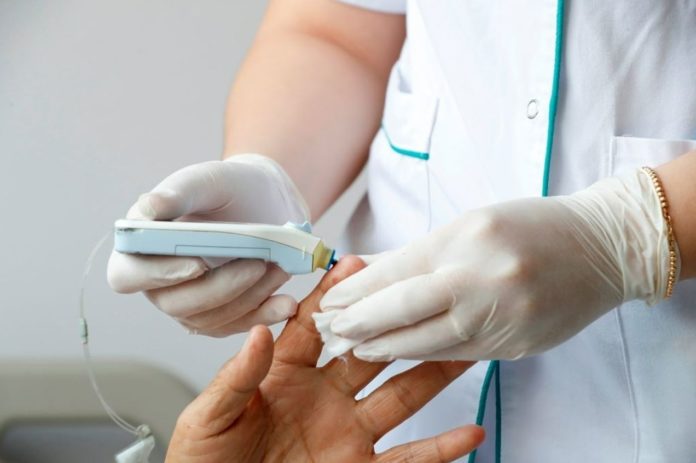Scientists find a new route that controls blood glucose, circumventing insulin resistance.
Insulin’s discovery 100 years ago paved the way for millions of individuals living with diabetes to have a chance at survival.
Since then, insulin, which is produced by the pancreas, has been widely regarded as the principal treatment for illnesses defined by excessive blood sugar (glucose), such as diabetes, among other things.
Now, scientists at the Salk Institute have found a second molecule, which is created in adipose tissue, that, like insulin, regulates blood glucose levels in a potent and quick manner. They discovered something that could lead to the development of new diabetes treatments, as well as the establishment of intriguing new routes in metabolism research.
The research, which was published on January 4, 2022 in the journal Cell Metabolism, demonstrates that a hormone known as FGF1 regulates blood glucose levels by limiting fat breakdown (lipolysis).
FGF1 regulates blood glucose by blocking lipolysis, just as insulin does, but the two hormones do so in distinctly different ways.
In addition, because of this difference, it is possible that FGF1 can be utilized to safely and effectively lower blood glucose levels in persons who suffer from insulin resistance.
“Finding a second hormone that suppresses lipolysis and lowers glucose is a scientific breakthrough,” said co-senior author and Professor Ronald Evans. “We have identified a new player in regulating fat lipolysis that will help us understand how energy stores are managed in the body.”
When we eat, our bloodstream is flooded with energy-rich lipids and glucose. The hormone insulin is generally responsible for transporting these nutrients to cells in muscle and fat tissue, where they are either utilized immediately or stored for later use.
Glucose is not properly cleared from the bloodstream in patients with insulin resistance, and increased lipolysis raises the amounts of fatty acids in the bloodstream. These additional fatty acids increase the rate at which glucose is produced by the liver, further raising already elevated glucose levels.
Furthermore, fatty acids accumulate in organs, aggravating insulin resistance, which is a feature of both diabetes and obesity, as previously stated.
Researchers have previously demonstrated that injecting FGF1 into rats significantly reduced blood glucose levels and that continuous FGF1 treatment alleviated insulin resistance. However, the exact mechanism by which it operated remained a mystery.
In the current investigation, the team explored the mechanisms that underlie these events, as well as the connections between them. First, they demonstrated that FGF1 reduces lipolysis in the same way as insulin does.
The researchers next demonstrated that FGF1 regulates the synthesis of glucose in the liver in the same way that insulin does. As a result of these similarities, the researchers began to investigate whether FGF1 and insulin use the same signaling (communication) pathways to regulate blood glucose levels.
As it was already documented that insulin suppresses lipolysis through the action of PDE3B, an enzyme that initiates a signaling pathway, the researchers investigated a wide range of related enzymes, with PDE3B at the top of their list of potential candidates. They were shocked to discover that FGF1 operates via a different pathway—PDE4.
“This mechanism is basically a second loop, with all the advantages of a parallel pathway. In insulin resistance, insulin signaling is impaired. However, with a different signaling cascade, if one is not working, the other can. That way you still have the control of lipolysis and blood glucose regulation,” added first author Gencer Sancar.
The discovery of the PDE4 pathway opens the door to new avenues of drug discovery and fundamental research in the areas of high blood glucose (hyperglycemia) and insulin resistance, among other things. In order to boost the activity of PDE4, scientists are eager to examine the possibility of altering FGF1. Another approach involves targeting various locations along the signaling pathway prior to the activation of PDE4.
“The unique ability of FGF1 to induce sustained glucose lowering in insulin-resistant diabetic mice is a promising therapeutic route for diabetic patients. We hope that understanding this pathway will lead to better treatments for diabetic patients,” said co-senior author Michael Downes. “Now that we’ve got a new pathway, we can figure out its role in energy homeostasis in the body and how to manipulate it.”
Source: 10.1016/j.cmet.2021.12.004
Image Credit: Getty
You were reading: Diabetes breakthrough: a second hormone that suppresses lipolysis and lowers glucose, new study finds
